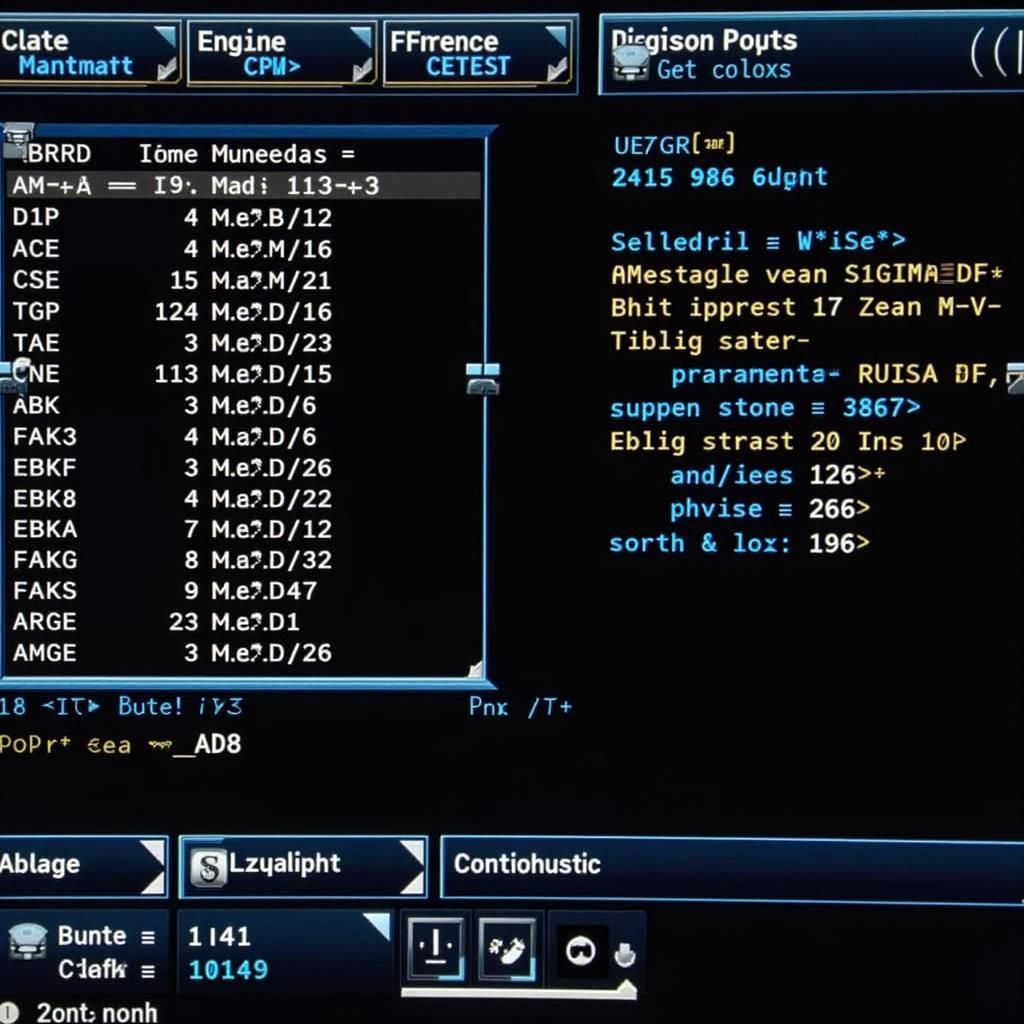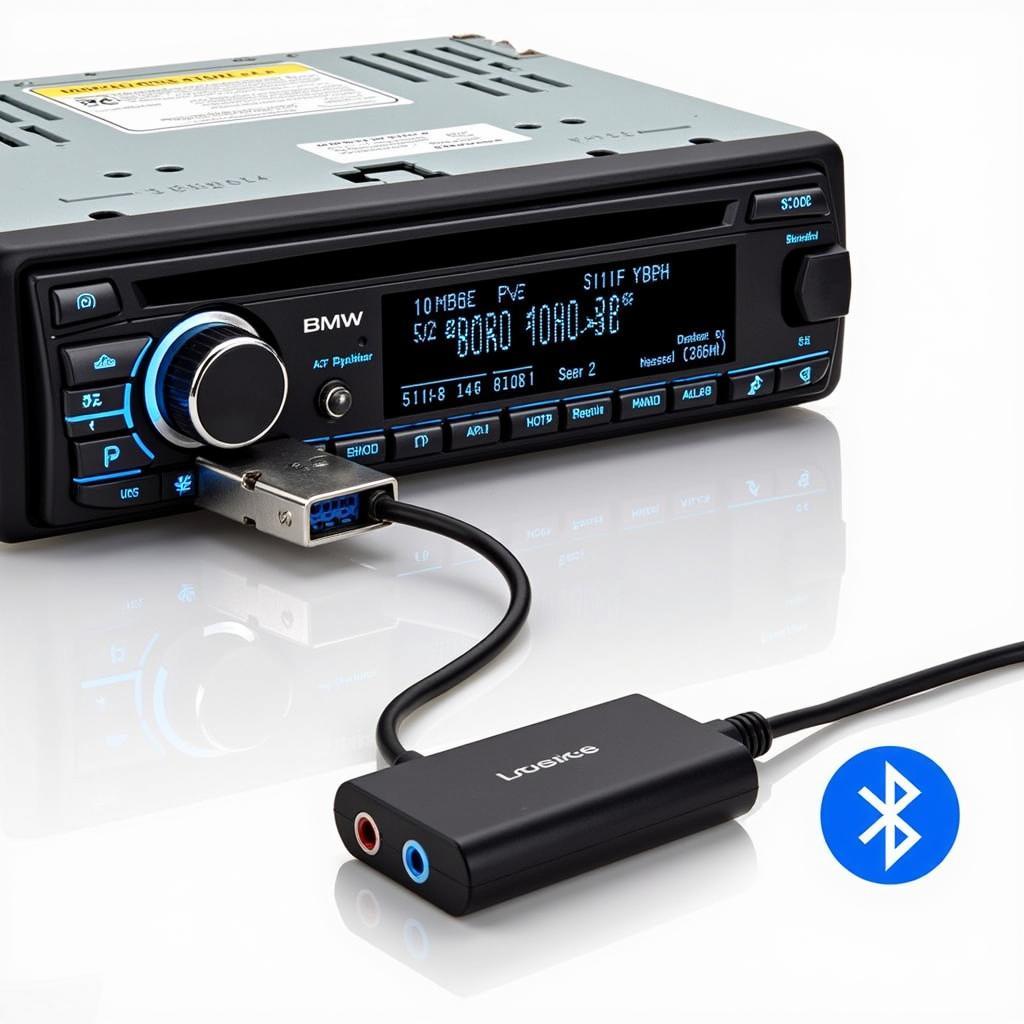The BMW FRM (Footwell Module) fusible module, also known as the fuse box, is a critical component responsible for controlling various electrical functions in your BMW. From power windows and central locking to interior lighting and exterior mirrors, a malfunctioning FRM can lead to a frustrating array of issues. This article aims to provide a comprehensive guide to understanding, troubleshooting, and resolving problems related to the BMW FRM fusible module.
Understanding the BMW FRM Fusible Module
The FRM is essentially the central hub for many of your BMW’s electrical systems. It houses a series of fuses and relays that protect individual circuits from overloads, preventing damage to more expensive components. It also plays a key role in communication between various modules within the vehicle’s electrical network. Understanding its function is crucial for effective diagnosis and repair. Issues with the FRM can manifest in various ways, ranging from a single malfunctioning component to a complete electrical system failure.
Common Symptoms of a Faulty FRM
Several symptoms can point towards a problem with your BMW’s FRM fusible module. These include:
- Power window malfunctions: Windows may become unresponsive, operate intermittently, or refuse to close completely.
- Central locking issues: Inability to lock or unlock the doors using the remote or key.
- Interior lighting problems: Dome lights, footwell lights, or other interior lights may not function correctly.
- Exterior mirror issues: Mirrors may not adjust, fold, or have their heating function disabled.
- Malfunctioning turn signals or hazard lights: These critical safety features may become erratic or fail to operate.
- Electrical system failures: In severe cases, a faulty FRM can lead to complete electrical system failure.
Diagnosing FRM Issues
Diagnosing FRM problems requires a systematic approach. Start by visually inspecting the fuses for any signs of damage, such as blown fuses or melted components. Next, utilize a diagnostic scanner capable of reading BMW fault codes. This will provide valuable insight into the specific areas of concern within the FRM.
Troubleshooting and Repair Options
Once the problem has been diagnosed, several repair options are available:
- Fuse Replacement: If a blown fuse is identified, replacing it with the correct amperage fuse is the simplest solution.
- Relay Replacement: Faulty relays can also cause issues. Replacing the suspected relay is a relatively straightforward procedure.
- FRM Repair: In some cases, the FRM itself can be repaired. This involves identifying and replacing damaged components within the module.
- FRM Replacement and Programming: If the FRM is beyond repair, replacement is necessary. A new or used FRM will require programming to match your specific vehicle’s configuration.
Preventing Future FRM Problems
Regular maintenance and preventative measures can help avoid future FRM issues. Ensure your BMW’s electrical system is not overloaded by avoiding the use of excessive aftermarket accessories. Additionally, have your vehicle’s electrical system inspected by a qualified technician during routine maintenance checks.
Conclusion: Keeping Your BMW FRM in Top Shape
The BMW FRM fusible module plays a vital role in the proper functioning of your vehicle’s electrical systems. Understanding its function, recognizing potential problems, and taking appropriate preventative measures are crucial for ensuring a smooth and trouble-free driving experience. Addressing FRM issues promptly can prevent more extensive and costly repairs down the line.
FAQ
- What does FRM stand for in a BMW? FRM stands for Footwell Module.
- What are the common signs of a faulty FRM? Common signs include power window malfunctions, central locking issues, and interior lighting problems.
- How is a faulty FRM diagnosed? Diagnosis involves visual inspection of the fuses and using a diagnostic scanner.
- Can a faulty FRM be repaired? In some cases, the FRM can be repaired, but sometimes replacement is necessary.
- How can I prevent future FRM problems? Avoid overloading the electrical system and have regular maintenance checks.
- What happens if I ignore FRM problems? Ignoring these problems can lead to more extensive and costly repairs later.
- Where can I get my BMW FRM diagnosed and repaired? Contact a qualified BMW technician or specialist for assistance.
Common Scenarios & Questions:
- My windows won’t roll down, could it be the FRM? Yes, malfunctioning power windows are a common symptom of a faulty FRM.
- My key fob isn’t working, is it related to the FRM? Central locking issues, including key fob malfunctions, can be attributed to a problematic FRM.
- My interior lights are flickering, should I check the FRM? Yes, flickering or malfunctioning interior lights can indicate an issue with the FRM.
Related Articles and Questions:
- Understanding BMW Electrical Systems
- Troubleshooting Common BMW Issues
- How to Choose a Reliable BMW Repair Shop
Need help with your BMW FRM? Contact us via Whatsapp: +1 (641) 206-8880, Email: CARDIAGTECH[email protected] or visit our workshop at 276 Reock St, City of Orange, NJ 07050, United States. Our 24/7 customer support team is ready to assist you.


